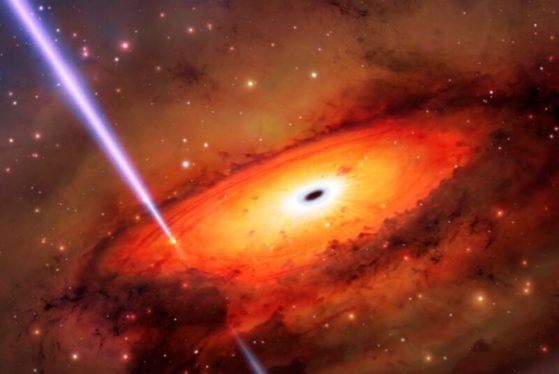
Enlarge / Astronomers studying a powerful gamma-ray burst (GRB) may have observed a never-before-seen way to destroy a star. (credit: Int’l Gemini Observatory/NOIRLab/NSF/AURA/M. Garlick/M. Zamani)
When astronomers spotted a powerful gamma-ray burst (GRB) in October 2019, the most likely explanation was that it was produced by a massive dying star in a distant galaxy exploding in a supernova. But data from subsequent observations showed that the burst originated with the collision of stars (or their remnants) in a densely packed area near the supermassive black hole of an ancient galaxy, according to a new paper published in the journal Nature Astronomy. Such a rare event has been hypothesized, but this is the first observational evidence for one.
As we’ve reported previously, gamma-ray bursts are extremely high-energy explosions in distant galaxies lasting between mere milliseconds to several hours. There are two classes of gamma-ray bursts. Most (70 percent) are long bursts lasting more than two seconds, often with a bright afterglow. These are usually linked to galaxies with rapid star formation. Astronomers think that long bursts are tied to the deaths of massive stars collapsing to form a neutron star or black hole (or, alternatively, a newly formed magnetar). The baby black hole would produce jets of highly energetic particles moving near the speed of light, powerful enough to pierce through the remains of the progenitor star, emitting X-rays and gamma rays.
Those gamma-ray bursts lasting less than two seconds (about 30 percent) are deemed short bursts, usually emitting from regions with very little star formation. Astronomers think these gamma-ray bursts result from mergers between two neutron stars or a neutron star merging with a black hole, comprising a “kilonova.”
Read 7 remaining paragraphs | Comments

